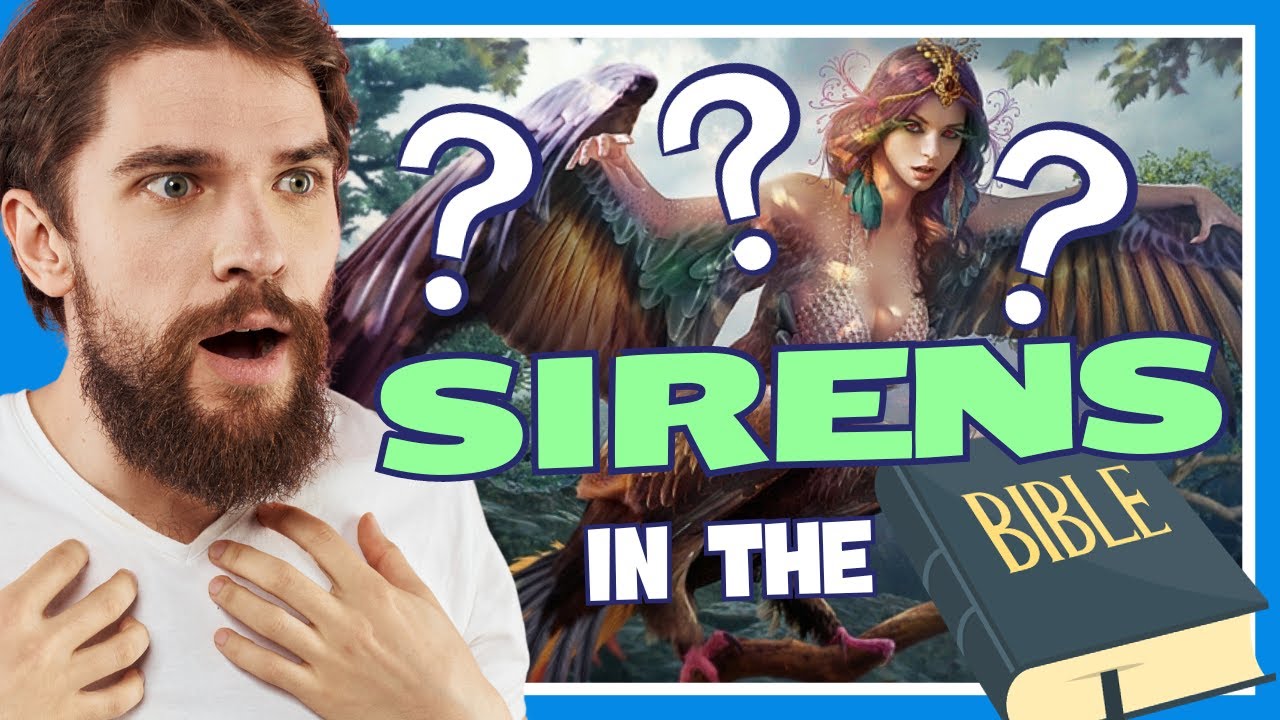Have you ever wondered if sirens are mentioned in the Bible? In this intriguing post, we explore the fascinating topic of sirens in biblical texts and uncover the hidden references that may surprise you. Delve into the symbolism and significance behind these mythical creatures and gain a deeper understanding of their portrayal in ancient scriptures.
By unraveling the mystery of sirens in the Bible, we not only enhance our knowledge of biblical literature but also gain insight into the cultural beliefs and storytelling techniques of the time. Discover how these enchanting beings were used to convey moral lessons and spiritual truths, shedding light on their relevance in today’s context. Join us on this captivating journey to uncover the secrets of sirens in the Bible and enrich your appreciation of these mystical beings.
Sirens in the Bible: Separating Myth from Scripture
Sirens are not specifically mentioned in the Bible. However, there are some passages that some scholars believe may refer to mythical creatures similar to sirens. One of the most commonly cited passages is from the book of Isaiah in the Old Testament.
In Isaiah 13:21-22 (NIV), it describes a desolate Babylon where “wild animals will lie down there, and their houses will be full of howling creatures; there ostriches will dwell, and there wild goats will dance. Hyenas will howl in their strongholds, and jackals in their luxurious palaces.” Some interpretations suggest that the “howling creatures” could be a reference to creatures like sirens, known for their enchanting yet dangerous songs.
Another passage that is sometimes connected to sirens is from the Book of Revelation in the New Testament. In Revelation 18:2 (NIV), it speaks of the fall of Babylon and mentions, “Fallen! Fallen is Babylon the Great! She has become a dwelling for demons and a haunt for every impure spirit, a haunt for every unclean bird, a haunt for every unclean and detestable animal.” While not a direct mention of sirens, the imagery of unclean and detestable creatures living in Babylon has led some to draw parallels to the idea of mythical seductive beings like sirens.
Overall, while sirens are not explicitly mentioned in the Bible, there are passages that allude to similar types of mythological creatures that have captivated the imagination of scholars and readers alike. The interpretation of such passages as relating to sirens highlights the rich tapestry of symbolism and imagery found throughout the biblical texts.
What does siren mean in the Bible?
In the Bible, the term “siren” is not explicitly mentioned. However, there are references to similar concepts such as “sirens” or “mermaids.” In the Old Testament, there is a mention of sea creatures like Leviathan in Job 41:1-34 and sea monsters in Psalm 74:13-14. In the New Testament, some scholars interpret the mention of “creatures” or “beasts” in Revelation as possibly referring to mythical or symbolic beings.
Overall, while the specific term “siren” may not be present in the Bible, there are references to mysterious and powerful sea creatures that evoke similar imagery. These creatures often symbolize chaos, danger, or the unknown in biblical narratives.
Does the Bible say anything about mermaids?
The Bible does not specifically mention mermaids. The closest reference to a creature resembling a mermaid can be found in the Book of Job, where it describes the Leviathan as a sea monster with scales and sharp teeth. This creature is often interpreted as a symbolic representation of chaos and the power of God over creation. However, mermaids as we imagine them today are not mentioned in the Bible.
Why was Enoch removed from the Bible?
Enoch was not removed from the Bible, but rather some of the texts about him were not included in the canonical Bible. The Book of Enoch, also known as 1 Enoch, is an ancient Jewish religious work that is attributed to Enoch, the great-grandfather of Noah. It is considered non-canonical by most branches of Judaism and Christianity.
The reason why the Book of Enoch was not included in the canonical Bible is due to several factors. One reason is that the book contains teachings and stories that were not consistent with the theology and beliefs of mainstream Judaism and Christianity. Additionally, the authenticity and authorship of the book have been questioned by scholars over the centuries.
Despite not being included in the canonical Bible, the Book of Enoch has been influential in certain Christian traditions and has been studied for its insights into early Jewish and Christian thought. It is important to note that while the Book of Enoch is not considered part of the Bible by many, it remains a significant and valuable text for understanding ancient religious beliefs and practices.
What is the meaning of Isaiah 13 21?
Isaiah 13:21 in the Bible describes a desolate scene where wild animals and creatures of the night dwell in the ruins of Babylon after its destruction. The verse reads: “Wild animals will lie down there, and their houses will be full of howling creatures; there the ostriches will live, and there the wild goats will dance.”
This verse is part of a prophecy of judgment against Babylon, foretelling the city’s downfall and ruin. The imagery depicts a place that is abandoned and overrun by creatures, emphasizing the extent of the desolation that will come upon Babylon as a result of its sins.
Isaiah 13:21 serves as a reminder of the consequences of disobedience and sin, showing the ultimate fate of those who reject God’s ways. It is a warning of the judgment that will befall those who turn away from God and follow their own selfish desires.

